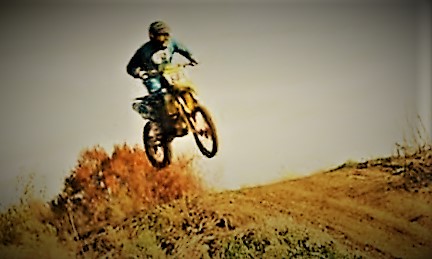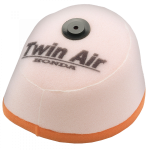Do your dirt bike and yourself a favor: Keep your bike tuned.
It’s going to save you gobs of cash in the long run as you extend engine life, and make riding infinitely more fun as you squeeze extra power and performance out of your machine.
In a perfect world, you should read your owner’s manual for your particular bike’s make and model. But it’s not a perfect world. And you might have already misplaced your manual. Or made it disappear performing some rad magic trick.
So, we’re going to guide you as best we can.
Tech tip: Get an hour meter. It’s the only way to be absolutely certain how many hours are on the bike. If you know how much time you’re putting on your engine, you’ll know exactly when you need to perform certain tasks.

Step 1
Check your oil
The first thing you should do is fire up your bike and let it run a few minutes to get the engine oil warm and circulating. It will also help with draining. It’s a best practice to change the crankcase oil after every three hours or so of racing. Trail riding and easier use require less-frequent oil changes. Your four-stroke engine requires fresh oil constantly if you want it to treat you right. And for the love of all that is good in the world, use good oil. It’s your friend. At the very least, respect the manufacturer’s recommendations.
Step 2
Check your oil filter
Pay attention when removing the oil filter cover and the filter to remember how all the pieces fit together. If you replace the filter, remember to rub some fresh oil on the filter’s lip for optimum sealing. Look for old, loose rubber O-rings. Replace them if necessary. Be sure to clean the inside of the filter cap with cleaner to remove buildup that can restrict oil flow. Lastly, be careful not to over-tighten the bolts when replacing your filter cover. Stripping those threads will add unwanted costs to your life. Don’t go more than 15 hours of riding without changing your oil filter.
Step 3
Check your air filter
Clean air filters are paramount. Dirt will crush your engine. So, don’t let it. Read all about how to clean your dirt bike air filter here.
Step 4
Check your spark plugs
Reading your spark plugs is important to understand whether your bike is properly jetted. Your spark plugs can tell you whether your bike is running too lean or too rich. For example, upon inspection with a magnifying glass, the presence of black, sooty streaks on the spark plug’s porcelain indicator suggest rich jetting. Tiny specks of metal indicate lean jetting. This post on how to read your spark plugs is geared toward automotive, but mostly applies here too.
Step 5
Check your valve clearances
Avoid the mistake of checking valve clearances early in your bike ownership, then neglecting it because you didn’t notice any change. It’s typically after several hours that the changes start to occur. Check your valve clearances every 15 hours of riding.
Step 6
Repack your muffler
Four-stroke motors produce a lot of heat and will burn through your packing more quickly than a two-stroke. Once your packing is shot, you’re going to hear more sound, experience decreased back pressure, and will burn through the muffler if you don’t change the packing. Inspect your muffler packing every 15-30 hours of riding. If you’re riding in mud or water, you’re going to have to repack more often.
Step 7
Re-jet your carburetor (if necessary)
This one’s certainly easier said (or written) than done, because of all the varying factors that can affect your engine’s performance. Altitude, for example, can greatly affect both air/fuel ratios and gasoline performance, as gas sold at sea level has a different additive mix than gas stored and sold at high elevations, and less air density requires less gas usage for the perfect mix. Read An Introduction to Carburetor Jetting for Four-Stroke Dirt Bikes here.
And that’s that.
Now go let that four-stroke rip.


I am having trouble with my 4 stroke at the moment, my son thought it would be a good idea to clean the inside of my bike with the garden hose. I found this out during my next ride. I have drained the oil, replaced it and let the bike run for a bit then repeat. I have run around 8 litres through it and still dies on me yet the oil is now clean coming out. Any ideas?
Use your sons money to fix it
Aaron Campbell,
I don’t know fully on what you mean when you say your son cleaned the inside of the bike with the garden hose, but if he put water down the exhaust pipe then your gonna have to most likely take apart the engine and locate where the puddle of water is sitting. A good example is to check out your carburetor and see if theirs any water in there. If not, then you just need to start looking at the basics here, just looking through the engine and see what you find will not hurt. If you have any questions please fell free to email me @ chumleyt@att.net